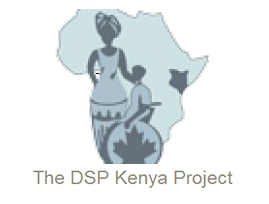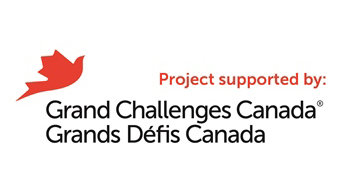2.5 – What do rehabilitation providers need to know about ARTs in SSA?
Although rehabilitation providers do not prescribe drugs, the effects of pharmacological treatments (both good and bad) experienced by people living with HIV can impact rehabilitation goals.
The goals of HIV drug therapy are:
- maximal and sustained suppression of viral load
- reduction of morbidity (illness) and mortality (death)
- improvement of quality of life
In 2015, the World Health Organization (WHO) recommended that all people living with HIV receive ART. In the Africa WHO Region in 2016, 54% of people living with HIV were receiving treatment.9
2.5.1 Benefits of Antiretroviral Therapy (ART)
Advances in the treatment of HIV with effective, more convenient and more tolerable ART have dramatically changed the course of HIV infection. This has led to a sharp reduction in morbidity and mortality among patients who have access to treatment.10
Antiretroviral drugs are not a cure for HIV. However, with lifelong adherence most individuals can achieve close to normal life expectancy.11
Benefits of Antiretroviral Therapy12
Saves lives. Antiretroviral therapy averted 7.6 million AIDS-related deaths globally from the peak in 1995 until 2013. Sub-Saharan Africa accounted for 63% of those lives saved.13
Prevents new HIV infections. Antiretroviral therapy reduces the risk of HIV transmission by up to 96%.14
Prevents illness. Antiretroviral therapy reduces the risk of tuberculosis infection among people living with HIV by 65%.15
Saves money and promotes development. HIV treatment can generate economic savings within five years.16 Spending on antiretroviral therapy also generates economic returns of double or more than the initial investment.17
Keeps people productive. Working-age adults living with HIV can return to work earlier when they receive treatment, boosting labour productivity and reducing hardship among affected households.
2.5.2 Treatment Guidelines
The World Health Organization (WHO) publishes recommendations on the diagnosis of HIV, the care of people living with HIV and the use of antiretroviral drugs for treating and preventing HIV infection from a global perspective.
These treatment guidelines address specific populations and provide guidance on how best to use ART to maximize success of drug therapy. The 2016 WHO Consolidated Guidelines on the use of Antiretroviral Drugs for Treating and Preventing HIV Infection are available at http://www.who.int/hiv/pub/arv/arv-2016/en/
2.5.3 ART Adherence
For best results, individuals with HIV need to take their medications every single day, in the proper way and at the same time for the rest of their lives.
When there is only partial adherence, suppression of HIV may not be achieved and there is increased risk of developing drug resistance.
Table 2.5: Examples of facilitators and barriers to adherence
| Facilitators to Adherence | Barriers to Adherence |
|---|---|
|
|
2.5.4 Side Effects of ART
As with other medications, antiretroviral medications have both short and long term side effects. These side effects can affect many different body systems, and can range from bothersome to fatal.
Rehabilitation providers can assist patients with impairments that are the result of side effects of HIV medication. For example, several drugs can cause a condition called distal symmetrical polyneuropathy, which presents as bilateral pain, tingling and numbness in both lower legs and feet.
Other drugs can cause a condition called lipodystrophy, which causes metabolic changes as well as changes in body composition. The body changes can present as reduced fat in arms and legs, and added fat around the waist or back of neck.
There are many drugs used to treat HIV, and therefore many different types of side effects. For side effects associated with specific drugs, see up-to-date websites such as:
- https://aidsinfo.nih.gov/understanding-hiv-aids/fact-sheets/22/63/hiv-medicines-and-side-effects
- https://aidsinfo.nih.gov/guidelines/html/1/adult-and-adolescent-arv/31/adverse-effects-of-arv
2.5.5 ART for Prevention
Emerging pharmacologic advances include the use of ART for prevention.18 This includes testing of pre-exposure prophylaxis (PREP) with oral or mucosally delivered antiretroviral medications to reduce an individual's risk of acquiring HIV infection.19
Microbicides are products that may reduce HIV risk when applied vaginally. Although there seems to be an overall acceptance by women of microbicides, they are not yet available on the market.20
While significant research has been completed on HIV vaccines, the development of a safe and effective vaccine remains a medium to long-term prospect.21
9World Health Organization, Global Health Observatory Data Repository. Antiretroviral therapy coverage. Data and estimates by WHO region. 2017. http://apps.who.int/gho/data/view.main.23300REGION?lang=en
10Mocroft A, Ledergerber B, Katlama C, Kirk O, Reiss P, d'Arminio Monforte A, Knysz B, Dietrich M, Phillips AN, Lundgren JD; EuroSIDA study group. Decline in the AIDS and death rates in the EuroSIDA study: an observational study. Lancet. 2003 Jul 5;362(9377):22-9. PubMed PMID: 12853195. http://www.ncbi.nlm.nih.gov/pubmed/12853195.
11Joint United Nations Programme on HIV/AIDS (UNAIDS). Global Report: UNAIDS report on the global AIDS epidemic, 2013. November 2013 http://www.unaids.org/sites/default/files/media_asset/UNAIDS_Global_Report_2013_en_1.pdf
12UNAIDS. Access to Antiretroviral Therapy in Africa: Status report on progress towards the 2015 targets. UNAIDS; Geneva, 2013
13UNAIDS. The Gap Report 2014. http://www.unaids.org/en/resources/documents/2014/20140716_UNAIDS_gap_report
14Cohen MS et al. Prevention of HIV-1 Infection with Early Antiretroviral Therapy. New Eng J Med. 2011;365:493-505.
15Suthar AB, Lawn SD, del Amo J, Getahun H, Dye C, Sculier D, Sterling TR, Chaisson RE, Williams BG, Harries AD, Granich RM. Antiretroviral Therapy for Prevention of Tuberculosis in Adults with HIV: A Systematic Review and Meta-analysis. PLoS Med. 2012;9:e1001270.
16Walensky RP et al. Cost-effectiveness of HIV Treatment as Prevention in Serodiscordant Couples. New Eng J Med. 2013;369:1715-1725.
17Resch S, Korenromp E, Stover J, Blakeley M, Krubiner C, Thorien K, Hecht R, Atun R. Economic returns to investment in AIDS treatment in low and middle income countries. PLoS ONE. 2011;6:e25310.
18Delva W, Eaton JW, Meng F, Fraser C, White RG, Vickerman P, Boily MC, Hallett TB. HIV treatment as prevention: optimising the impact of expanded HIV treatment programmes. PLoS Med. 2012;9(7):e1001258. doi: 10.1371/journal.pmed.1001258. Epub 2012 Jul 10. Review. PubMed PMID: 22802738; PubMed Central PMCID: PMC3393661.
19Fauci AS, Folkers GK. Toward an AIDS-free generation. JAMA. 2012 Jul 25;308(4):343-4. doi: 10.1001/jama.2012.8142. PubMed PMID: 22820783.
20Ruiz C, Torres V, Cianelli R, Ferrer L. Microbicides methods of prevention in HIV/AIDS controlled by women. Hispanic Health Care International. 2009;7(1):35-48. http://www.ingentaconnect.com/content/ springer/hhci/2009/00000007/00000001/art00006;jsessionid=3hpihxc4jfu93.alice
21Tieu HV, Rolland M, Hammer SM, Sobieszczyk ME. Translational research insights from completed HIV vaccine efficacy trials. J Acquir Immune Defic Syndr. 2013 Jul;63 Suppl 2:S150-4. doi: 10.1097/QAI.0b013e31829a3985. Review. PubMed PMID: 23764628.

 Previous Page
Previous Page




